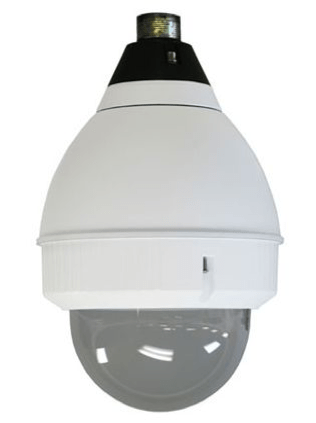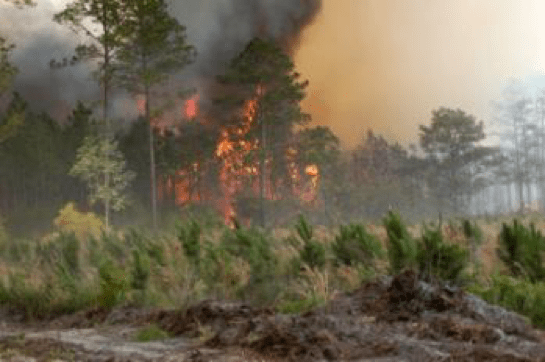
How the University of Montana College of Forestry uses the IP camera system by Virginia Fair
When a customer calls Kintronics seeking information about IP cameras, our sales engineers ask questions such as “What are your objectives? What do you want to monitor?” And “In what type of environment will you be mounting the camera?”
They are accustomed to hearing answers like parking areas, corridors, storerooms, entry areas, rear exits, elevators and so on. But every once in a while, the answer is unique and intriguing.
Such was the case when Bob Mesnik received a call from Jim Riddering, a research professor at the University of Montana, College of Forestry and Conservation. He needed cameras to monitor fires ……. forest fires ……. in Montana ……. in wilderness areas ……. very remote wilderness areas. In short, he needed a PTZ IP camera to install on a mountaintop, and it needed to be capable of viewing surrounding mountains of higher elevations. No, this was not your typical call.
It was not a typical query, nor is Professor Riddering your typical professor. He is also a program manager for the National Center for Landscape Fire Management, heading the remote sensing program. The Fire Center is a technology transfer project, administered and overseen by the UM College of Forestry and Conservation and funded by the Department of Agriculture and the Department of the Interior. It engages in research and development to help fire-fighters all over America
As is Kintronics’ procedure, Bob Mesnik took note of all Riddering’s requirements and promised to get back to him with his recommendations. To recap: the IP cameras had to monitor wild-land fires that may be burning not only above their horizon, but at varying angles to the left or right, and oh yes, at considerable distances. They had to withstand the harsh Montana climate. And since they would be left in areas so remote as to be accessible only by helicopter, they needed to be capable of attaching to high bandwidth data radios to relay the video back to the fire center’s managers. It was indeed a challenging application. But this is the type of project Bob specializes in.
To address all these conditions, he recommended a specially engineered Kintronics system, the KM-401-ESVPoE.
Let’s see why.
The outdoor-ready IP PTZ camera would give clear images, and placing it in a special dome enclosure equipped with a heater/blower would enable it to withstand frigid winters, hot summers, and a smoky atmosphere. The camera system also needed to be able to tilt above the horizon so it could see higher mountains around the camera location. And it goes without saying Power over Ethernet (PoE) would be a necessity due to the intended location.

Other essential features included:
- A pan angle range of 360 degrees and a tilt angle range of 100 degrees (-90 degrees to 10 degrees) to provide maximum viewing.
- The IP66 enclosure is custom-modified to accommodate the added vertical range of motion needed to view higher terrain.
- 2.0-megapixel resolution to give high definition video and 30X optical zoom for the distances involved.
- Since light levels would also be an issue, the IP camera requires minimum illumination: Color – 0.3 Lux (F.1.6, 1/8 sec, SSC ON); Black and White – 0.03 Lux (F1.6, 1/8 sec, SSC ON)
Fascinated by this application, I reached out to Jim Riddering for more background information about the Fire Center, and he was kind enough to take time out of his hectic schedule to talk to me.
He explained that the majority of fires they are called into are caused by lightning and have progressed beyond being simple fires to complex fires. A complex fire is typically a long burning, uncontrollable fire located nowhere near any roads. At this point, the usual protocol is for local firefighters to call in outside resources. And it is these outside fire agencies who may choose to seek the help of the Fire Center’s Fire Intelligence Module, of which his Remote Sensing Unit is a part.

Riddering emphasizes that the Fire Center “is called in to provide a service.” That service is not to assist in firefighting, nor is it to advise on fire suppression. They are a technology transfer project, and as such, they are there to gather data. They judge where to set up their equipment, the cameras, radios, weather stations, and other data collection devices. They gather information and pass it on to the fire authorities to aid them in making their own decision on how to proceed.
The cameras play a key part in the decision-making process. Networked with the long-distance data radios they provide real-time fire intelligence in the form of time streamed 30-second images. Since these are available to anyone having web interface access, the fire can be monitored by firefighters at nearby command stations as well as authorities and agencies near and far.
Riddering says the work of the Fire Intelligence Module is not limited to Montana. They have been sought out by, and have responded to, fire agencies all over the country. And when they arrive, they arrive with a lot of experience under their belts, and not only technological. Riddering, as well as his team members, have all put in many hours on the ground battling fires. He served as a Hotshot, the elite National Forest Services fire-fighting crew. When called to serve, Hotshots arrive in twenty-person hand crews to battle forest fires all over the country.
When asked about his work as Professor Riddering, he says he engages in “academic research, applied work” to help fire agencies build on their knowledge and understanding of fire. As such, most of the students in his graduate program have a fire affiliation and are working toward a Master of Science in Forestry Services.
I asked Professor Riddering how well the IP PTZ cameras performed out in the field and he declared the quality and resolution of the videos “a dramatic improvement” over the cameras they replaced. He also appreciated the hardiness of the enclosure, allowing him to mount one of the cameras on a fire watchtower, leave it up over the winter, and find no damage incurred when checked upon in the spring.
Kintronics is glad to have aided Riddering and the rest of UM’s Fire Center in their quest. And if you want a first-hand look, (or maybe a second) – take a look at this Youtube video that’s taken from footage captured by one of the cameras catching the smoke and fury of a complex fire.
http://www.youtube.com/watch?v=Kz4uONTapg8
If you have a special requirement for an IP camera system, please contact us. We can be reached at 1-800-431-1658 in the USA, and 914-944-3425 outside the USA, or use our contact form.